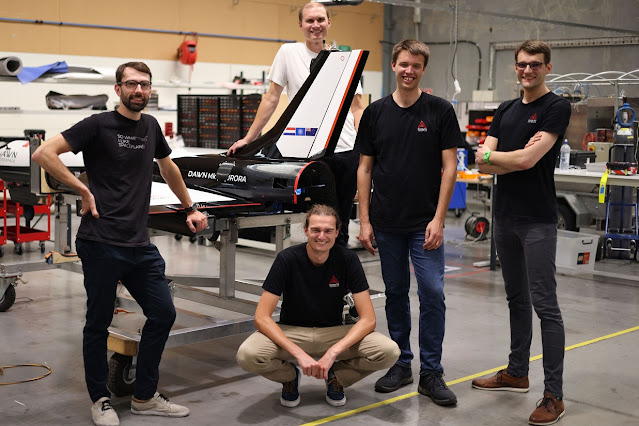There's an area of the atmosphere that's almost impossible to observe regularly. At roughly 20 to 60 miles, it's too high for balloons or regular aircraft, while being much (much!) too low for satellites to survive. A New Zealand startup company called Dawn Aerospace is working to improve access to what has been called the ignore-o-sphere. They're prototyping a series of rocket-powered spaceplanes that are intended to fly research payloads into this height range multiple times a day.
They said today that they had completed the first three test flights of their Mark-II spaceplane. This is a very early prototype and Dawn doesn't expect to do more than a few test flights on this platform.
This Mk-II Aurora vehicle measures 4.5 meters long and is powered by a combustion rocket engine fueled by kerosene and hydrogen peroxide. During its initial flights, the vehicle flew to an altitude of about 1,800 meters and reached a maximum speed of about 315 kilometers per hour, the company said. [5900 feet and 195 mph - SiG]
(The Mark-I vehicle, by the way, flew on a conventional jet engine.) The test flights are being conducted out of Glentanner Aerodrome on the south island of New Zealand, and will eventually see this vehicle top out at about 12 miles altitude. The lessons learned from this plane will be put into a second version of the Mk-II Aurora, which could take flight before the end of this year or early in 2024.
In an interview, Dawn Aerospace chief executive Stefan Powell said this second vehicle would have a far lighter structure, a more powerful engine, and other features that would allow it to climb far higher. The goal is to fly the spaceplane to an altitude of 100 km, above the internationally recognized boundary of space.
The second vehicle will still be small and not capable of carrying more than perhaps 5 to 10 lbs. It's obviously not going to be carrying a second stage with that power level. Still, I think that amount of weight is in line with smaller Cube Sats or something specially designed for the purpose.
During their few days of testing, they ran into a problem that demonstrated the value of their rapid reusability model.
During the first flight, the Mk-II Aurora consumed more fuel than anticipated due to a leak in the propellant system. The next day, Dawn engineers removed the Mk-II Aurora engine, took out the oxidizer tank and found the leak.
“It was reasonably trivial to fix that, put it back together and fly again,” Powell said.
But that's getting too far from the main story: flying up to that 30 to 100 km (~18 to 60 miles) range.
"Above 30 km is too high for balloons and too low for satellites," he said. "Some researchers refer to it as the ignore-o-sphere. We know it has large implications on climate models and weather models. So there is theorized to be a lot of value in understanding this part of the atmosphere better. So we'll probably just start sticking some pretty basic data gathering payloads onboard just because they don't weigh very much."
They're also planning a larger version of the Mk-II Aurora vehicle capable of achieving orbit and carrying payloads up to 250 kg - a quarter of a metric ton. That one will be called ... (wait for it) ... Mark-III.
The Mk-II Aurora in flight. Dawn Aerospace photo.
Impressive, but impossible to scale just how big that is. So we have this photo (also from Dawn Aerospace).
That's the actual Mk-II Aurora. Stefan Powell is in the middle, crouching position.


Fabulous!
ReplyDeleteSo it can fly 620' above Denver?
ReplyDeleteI seem to remember one of the reasons it's called the Ignore-o-sphere is because, well, not much happens there at all. It is basically an atmospheric desert without any redeeming qualities.
ReplyDeleteOr not.
Will be interesting to see what they actually find. If they actually make it past the test and prototype stage.
And here I was hoping for the return of the Concorde. Too high to shoot down, more fuel-efficient than a missile?
ReplyDelete